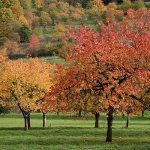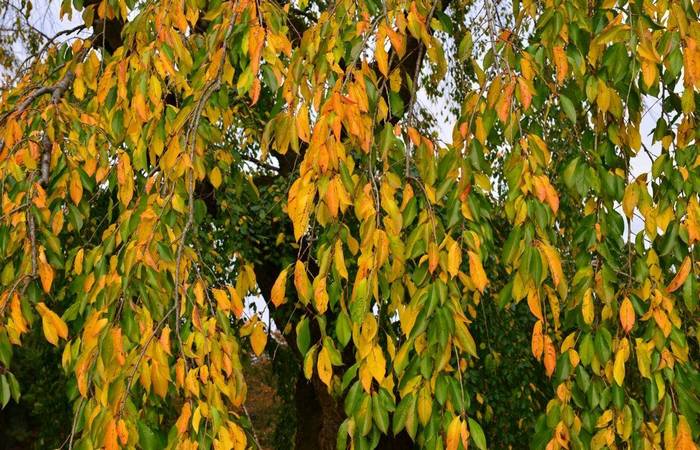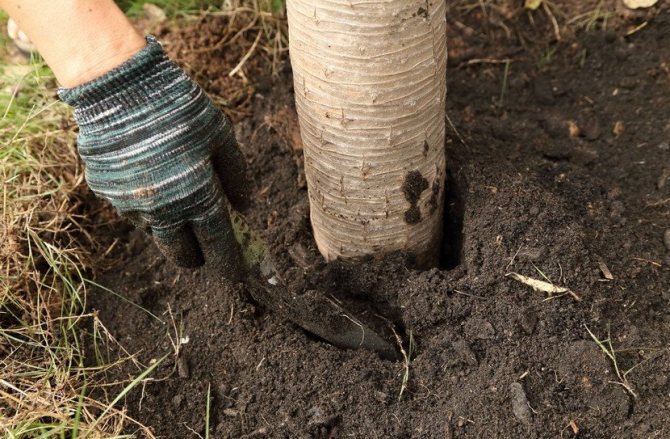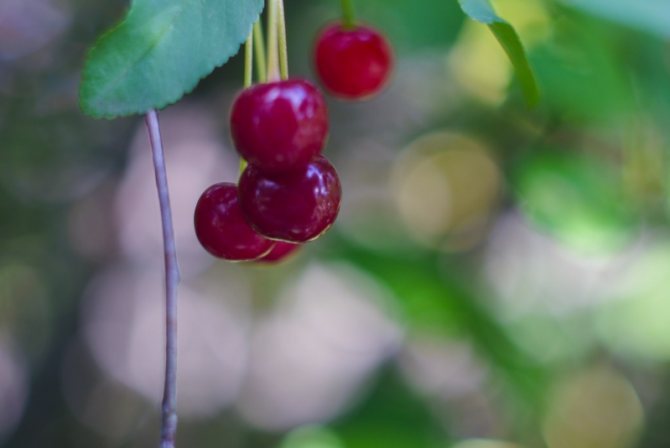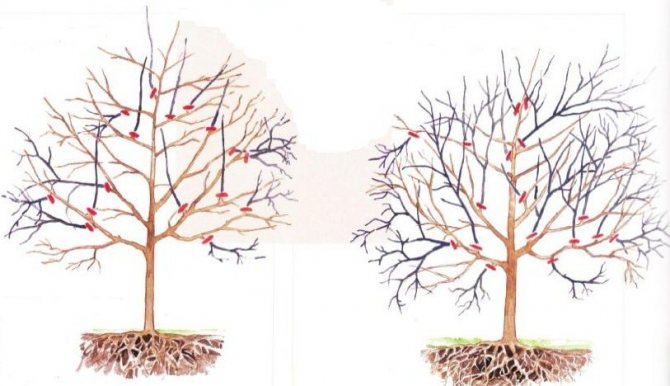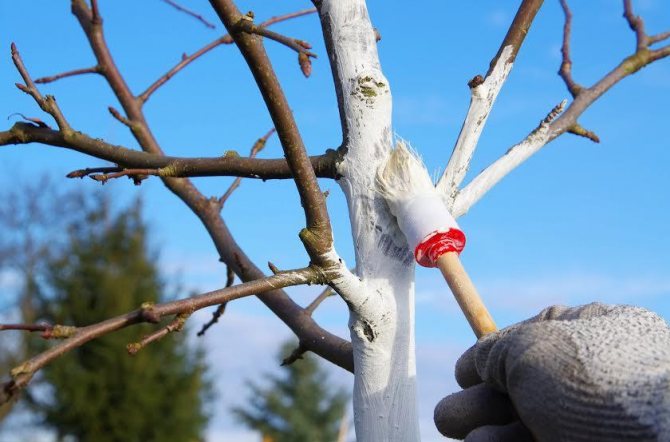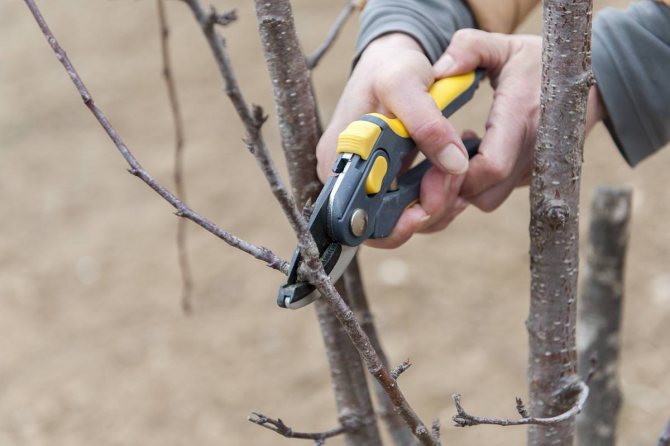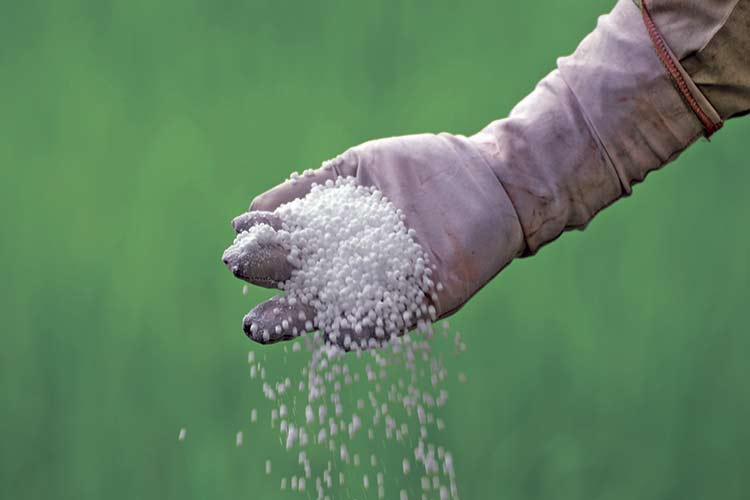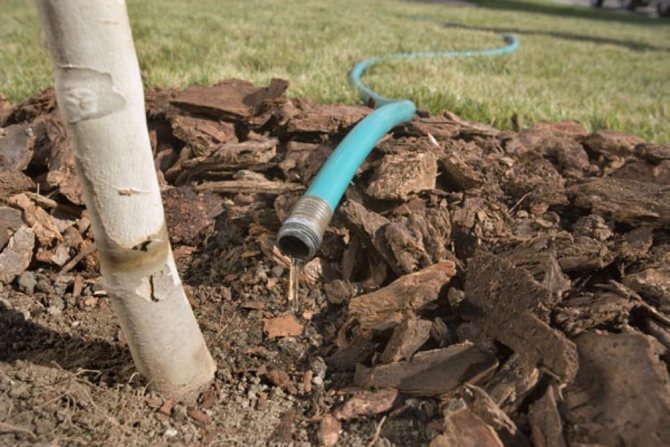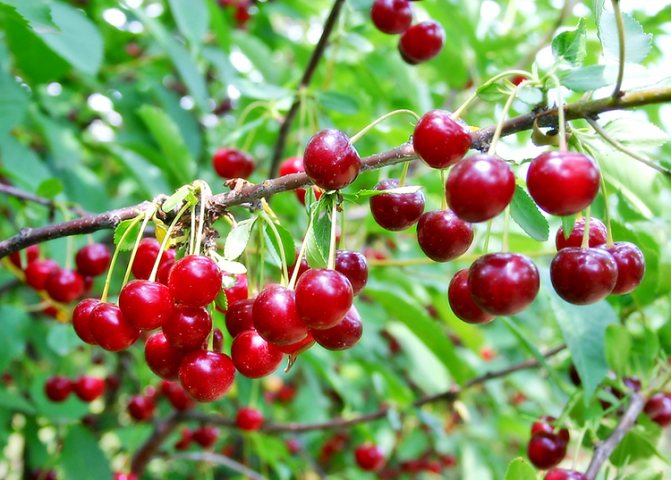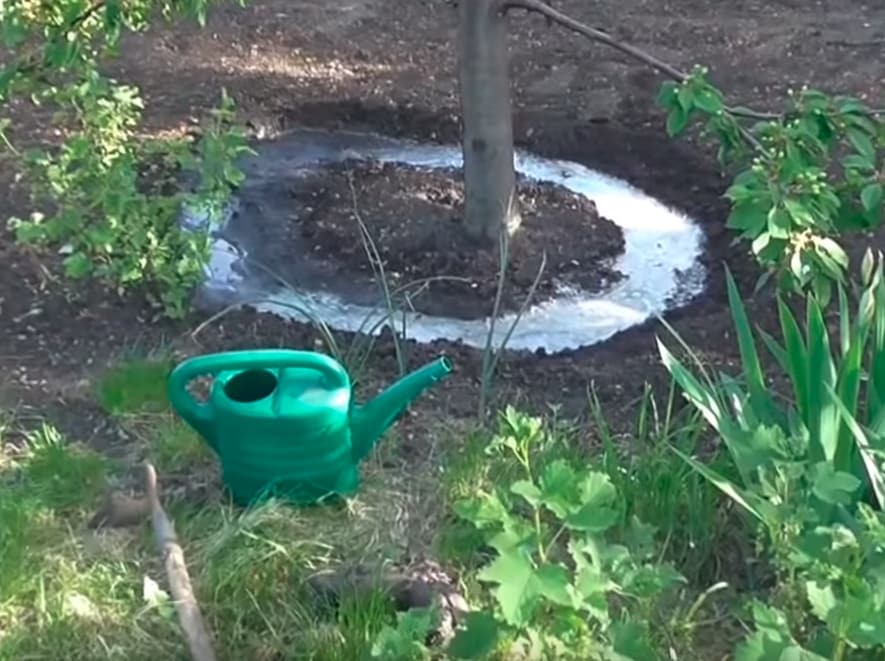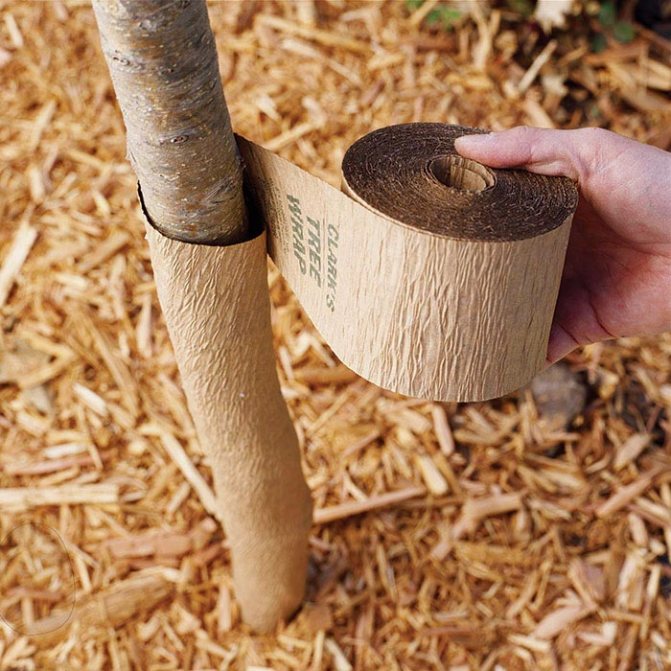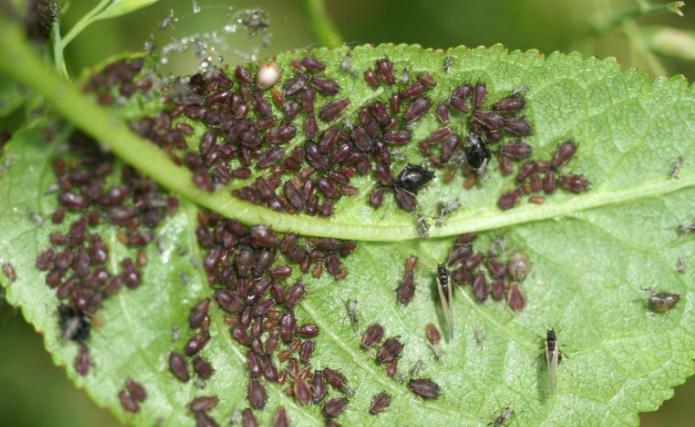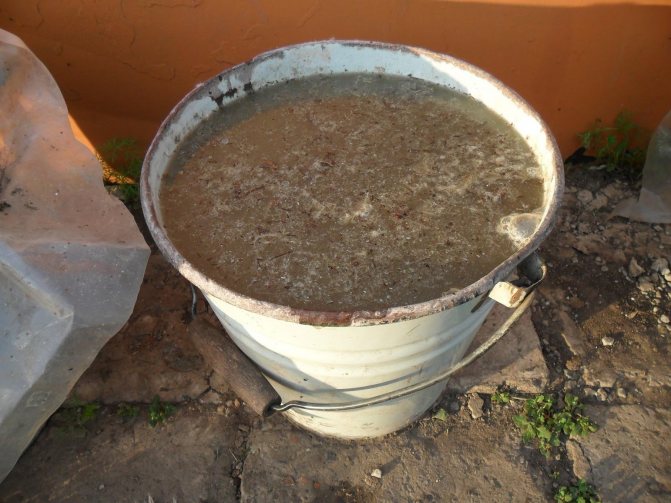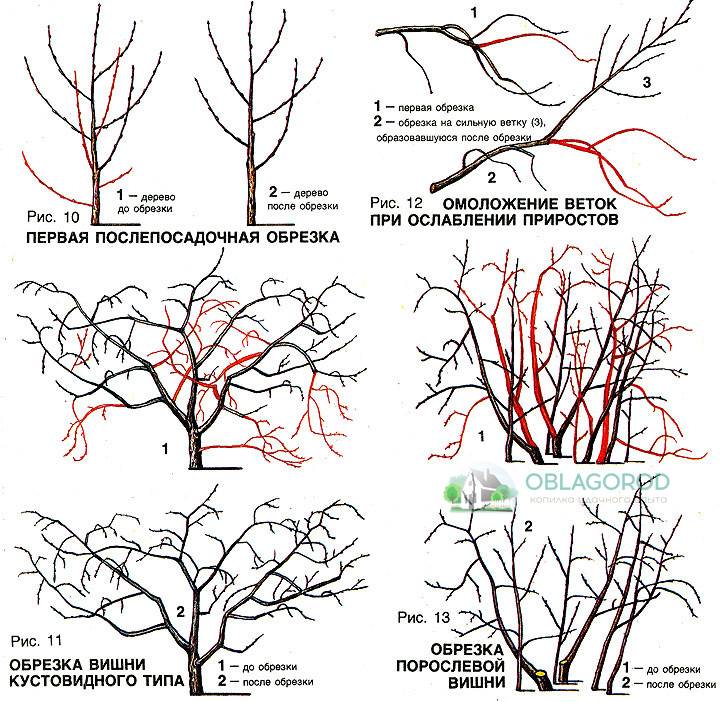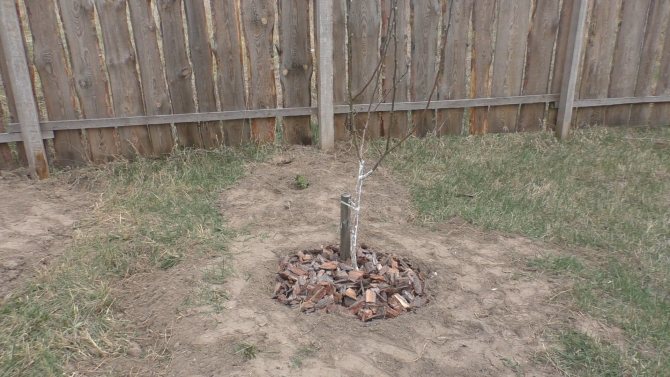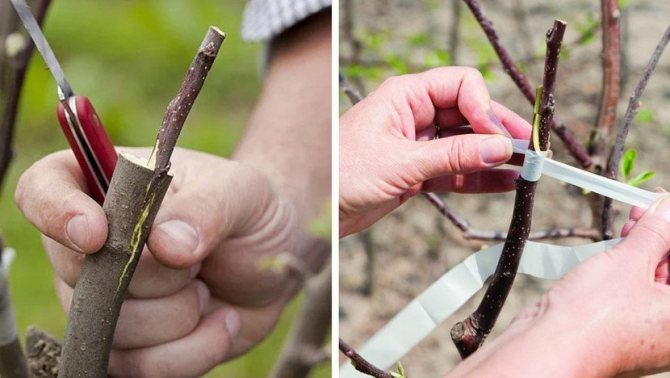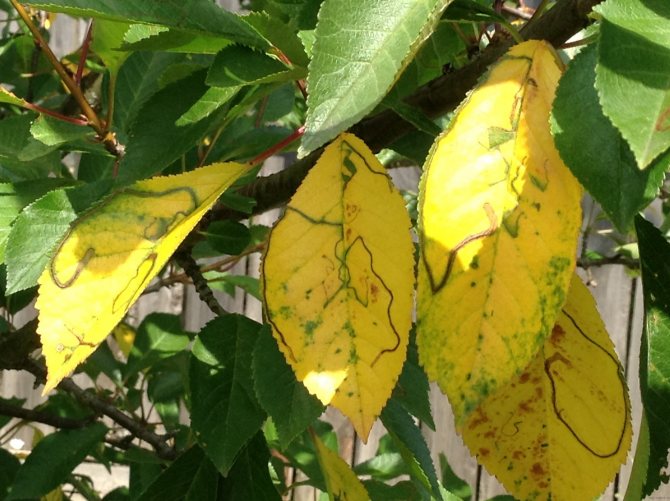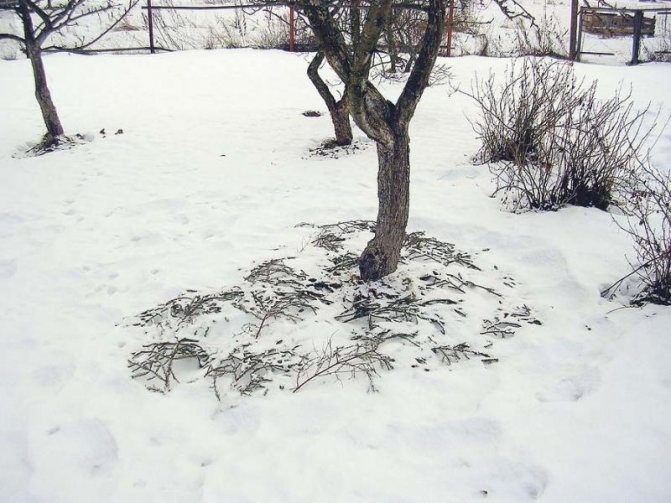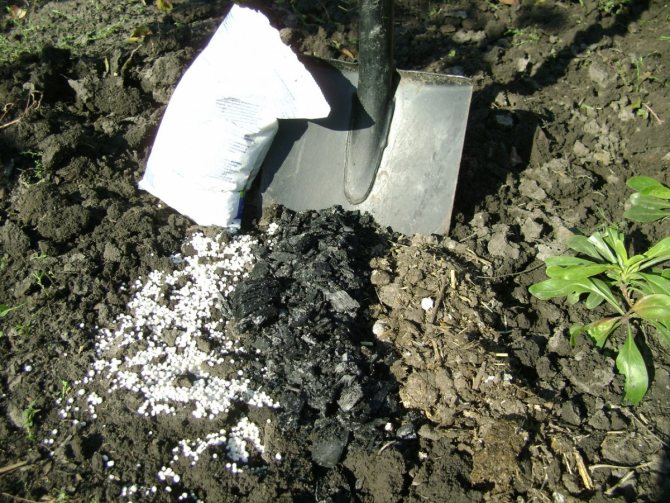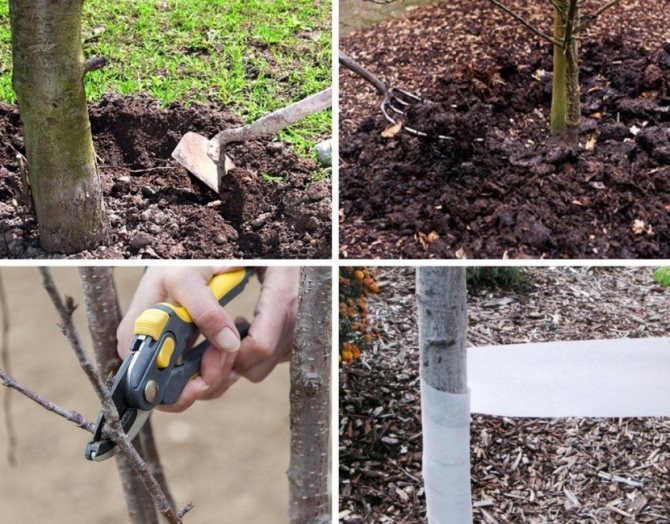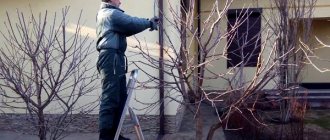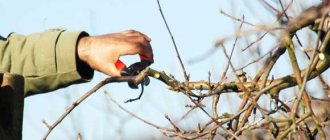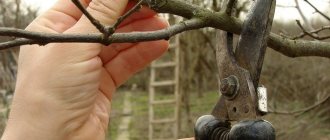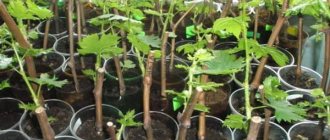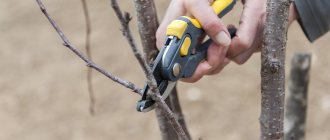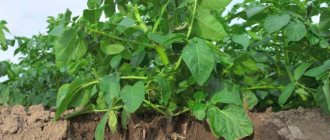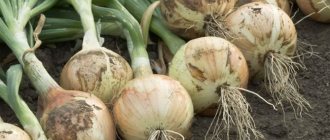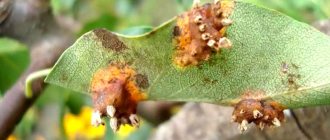There are fruit trees, the pruning of which must be carried out every season, or even several times a year, so quickly they grow new shoots. These garden plants include sweet cherries. She very quickly grows new shoots instead of the cut ones.
In addition, all varieties of cherries are very high. To reduce their height, many gardeners use dwarf rootstocks. But this method is not very effective. Therefore, it is recommended to shape the crown of this stone tree and adjust its height by pruning. But this procedure must be carried out correctly so as not to harm the tree, otherwise in the next season you may be left without a crop.
Below we will talk about the main agrotechnical measures when caring for cherries in the autumn, as well as about pruning these young and adult stone fruit trees.
Autumn Cherry Care Goals
After the growth of the shoots of the cherry stops, the tree begins to gradually enter a dormant period and prepare for the next season. At this time, flower buds begin to form in the tree, lignification of the trunk and shoots takes place.
In addition, cherries need to lay a sufficient amount of nutrients for a painless exit from dormancy. Therefore, the tree especially needs autumn fertilization and water-charging irrigation.
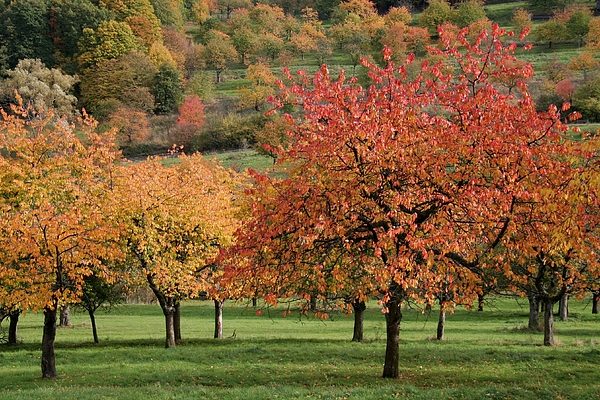
Cherries need autumn care
Another threat that warns cherries in winter fungal diseases... Basically, their spores fly to the tree in the fall, winter safely and, when the temperature is above + 15 ° C, they begin to actively develop. It is possible to fight microorganisms only with the help of careful treatment of the peri-stem circle and the tree with fungicides.
In autumn, the number of many pests reaches a maximum... Despite careful handling, insects can fly from other areas and lay overwintering eggs. Therefore, preventive treatment with insecticides and a thorough examination of the tree will be needed.
Cherry also needs a protective shelter from rodents and frostbites, insulation of the roots. It is important not to forget about the features of the winter season: squally winds and heavy rainfall. They often lead to cherry injuries. Any breakage of the crown complicates the development of the tree after the start of sap flow and affects fruiting. This can be prevented by preventive pruning.
Warming
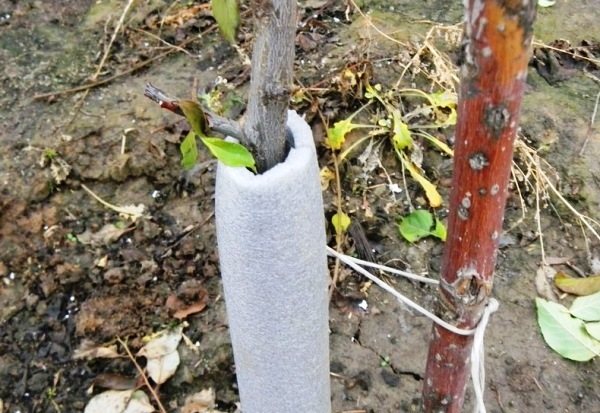

Novice gardeners need to understand how to cover cherries for the winter, if they did not manage to do it on time. Further actions will depend on the duration and persistence of frost. If a decrease in temperature is not expected, and the snow will not melt, then a snowdrift must be heated around the trunk, it will protect the near-trunk zone from freezing. If the temperature is not constant and soon the snow will melt, then in such a situation it is better to insulate the trunk with a covering material or use a box. All young cherry seedlings or thermophilic varieties need such insulation.
Attention!
Frost-resistant types of cherries in the middle lane are enough to whitewash and heat a small snowdrift into the base of the trunk. By the same principle, it is necessary to prepare cherries for winter in the Moscow region.
It is worth preparing cherries for wintering through the implementation of moisture-charging watering of the plant.The moisture from the tree evaporates all year round, although in winter it is not as intense as in spring and summer. But trees that are not nourished are dried out faster under the influence of low temperatures. Wet soil freezes less and has higher thermal conductivity.
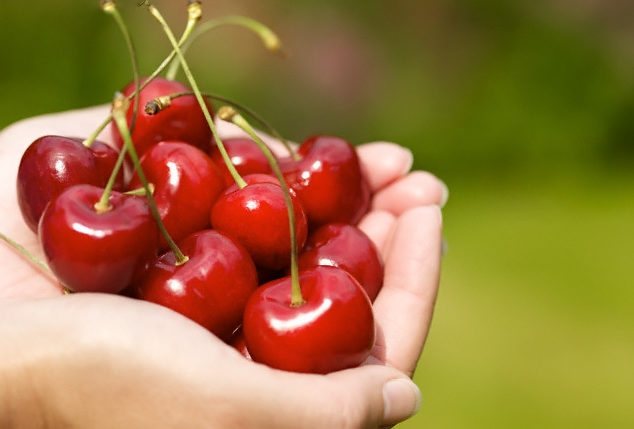

Pruning cherries in autumn
Cherry pruning at the end of the growing season, in addition to protection from natural factors, has another goal - crown thinning. During the procedure, you need to take into account the type of cherry, pruning of tree and bush plants is different... This is distinguished by the difference in fruiting: in bushy varieties, flower buds are formed on annual growths, in tree-like varieties on bouquet branches.
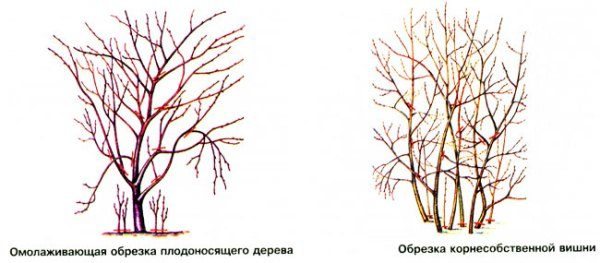

Scheme of autumn pruning of cherries of different types
Pruning is done when the cherry is dormant, at least 15 days before the first frost. Depending on the climatic zone, the dates can start from mid-September and last until the end of November. For the procedure, you need to prepare sharp garden shears and garden pitch.
Bush cherry:
- removal of ½ part of the branches that are bare at the end;
- shortening of skeletal and semi-skeletal branches to lateral branching;
- removal of damaged and rotten branches.
Pruning skeletal and semi-skeletal branches should be alternated over the years, so the tree will recover faster. Annual cherry shoots are not pruned. To increase branching, you need to cut off shoots longer than 50 cm by 1/3.
Tree cherry:
- shortening of annual shoots by 1/3;
- shortening shoots more than 1.5 meters by 1/7;
- removal of drying side branches.
Regardless of the type of tree, you need to delete branches: growing in the wrong direction, at an acute angle, intersecting with each other. Sections are made only over the kidney or along the annular bead. Wounds with a diameter of more than 1.5 cm are covered with a thin layer of garden varnish.
It is advisable to burn all the remnants of branches, mummified fruits, fallen leaves. The trunk circle should be as clean as possible and ready for other preparatory activities for the winter..
The popular belief that pruning in the fall can damage cherry yields is wrong. Correct pruning prevents the formation of possible infections, increases yields and prolongs the life of the fruit tree.
Summing up
Autumn cherry care should not be neglected. After harvesting, the tree needs to be prepared for the coming winter. All efforts will definitely pay off, and in the coming season the plant will certainly delight you with delicious fruits. In addition, the tree growing on its own reduces yields.
A source
- Black currant: how is pruning and care done in the fall to improve the quality of the crop
- Proper care, pruning and feeding of raspberries in the fall
- Raspberry remontant in autumn: care and pruning for beginners
- Perennial garden geranium - planting and care in the open field. Geranium in the country
Proper autumn care is the key to a good harvest
Seasonal cherry care activities should be started immediately after harvest, starting in August. This will help you to properly allocate time for the stage-by-stage processing of the tree and preparation for winter.
Moisture charging irrigation
In the absence of heavy rains in the fall, a moisture deficit is formed in the soil... This is a dangerous phenomenon during the autumn growth of the root system, which leads to the lack of development and death of certain sections of it. At the same time, cherries do not go through the hardening period well and, after its completion, are severely damaged by frost.
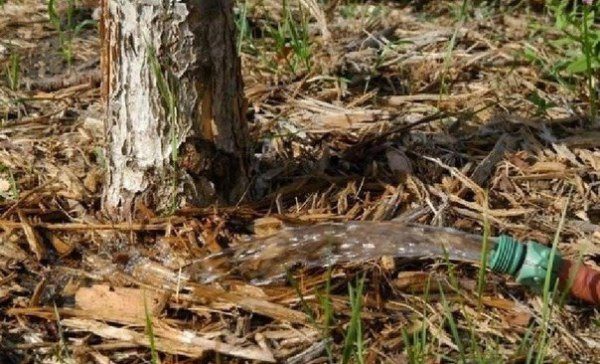

Autumn water-charging cherry irrigation
Moisture-charging irrigation should be carried out in the third decade of September... The watering rate, depending on the size of the tree, is from 18 to 24 buckets of water. The procedure is excluded during the rainy season.
The soil layer lying at a depth of 0.6-2 m provides the cherry with moisture in winter. When dryness develops at this level, the moisture supply to the plant is disrupted and winter conditions for cherries deteriorate.This often leads to drying out of individual branches, and in some cases, the entire crown.
Fertilization and feeding
The main elements required by cherries in the fall are phosphorus, potassium and calcium.... Each of these minerals is important in preparing the tree for the next season. The ovary of flowers, winter hardiness, resistance to diseases and the quality of fruiting of the tree depend on the abundance of these elements, so the tree should be fed. How to fertilize fruit trees?
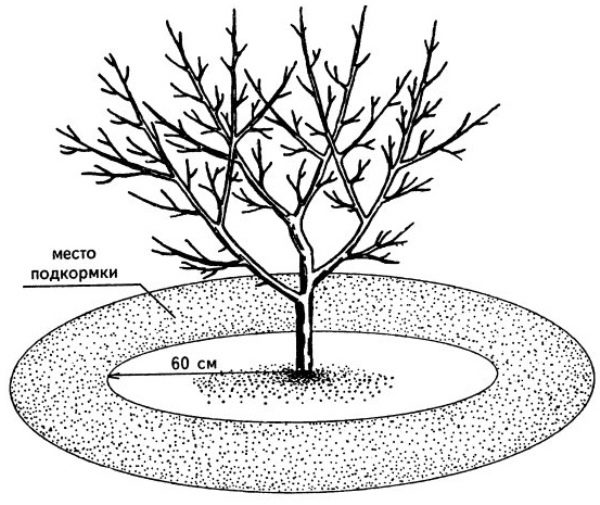

Fertilization scheme for the near-stem circle of cherries
To feed cherries, water solutions are introduced into the trunk circle:
- superphosphate (300g / 10 l);
- potassium chloride (150 g / 10 l);
- sulfate, nitrate, calcium chloride (25g / 25g / 25g / 10L).
The peculiarity of phosphorus is its low mobility, it is not washed out into the lower layers of the soil, and with a surface spread, its entry into the plant is difficult. Therefore, phosphorus is effective only when embedded in root-inhabited soil layers or when used as part of an aqueous solution.
Treatment against pests and diseases
Autumn treatment against pests must begin with cleaning the trunk and branches from layers of moss, lichen and exfoliated parts of the bark. This can be done with a wire brush.
Removing moss and lichens from cherry branches
You also need to collect all plant residues from the trunk circle, while removing weeds. It is often possible to find areas with clutches of eggs that need to be destroyed by hand.
If the number of pests does not exceed the established threshold, folk remedies are used:
- ash and soap solution (400g / 50g / 10l);
- an aqueous solution of birch tar (10 ml / 50g / 10l);
- drug from chamomile pharmacy, infused for 12 hours (1kg / 10l).
If cherries are severely damaged by pests, the tree must be treated with chemicals: Karbofos, Aktellik, Prestige, Bankol.
Another important treatment for cherries is spraying with fungicides... Cherries are sprayed with 1% Bordeaux liquid. Consumption for young trees up to 2 liters, for plants over 6 years old up to 10 liters. The trunk circle is also processed in parallel.
Typical mistakes
Mistake # 1
Most gardeners believe that there is no need to water the cherry in the fall. But, this is far from the case. Young trees in the fall should be watered as often as possible. Such frequent watering is not necessary for adult crops, but it should be watered abundantly.
After that, watering stops, which will lead to a decrease in sap flow and ensure a full wintering of the plant.
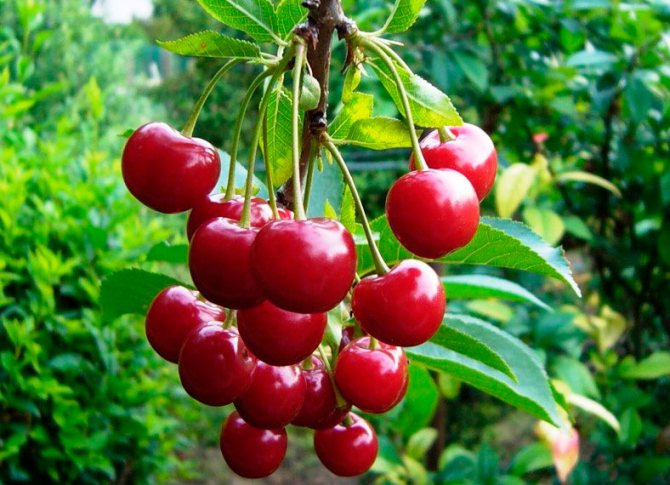

Mistake # 2.
Most inexperienced people prune by pruning. But, this procedure must be carried out according to certain rules. Cherry branches should extend from the trunk at an angle of less than 40 degrees.
Young trees need to be pruned every few years. Otherwise, a slowdown in their growth will be observed. To stimulate cherry growth, it is necessary to reduce the number of flower buds.
Mistake number 3.
In the summer, it is recommended to remove weeds in the near-trunk circle. Most gardeners forget about this procedure after the onset of autumn.
It is recommended to dig in the near-trunk circle no deeper than 15 centimeters (approximately 1/2 of the spade joint).
To ensure a high yield of the crop, it needs to be properly cared for throughout the season. In the autumn, do not forget about caring for cherries. If you follow all the tips and recommendations, you can easily prepare the tree for winter, as well as prune cherries in the fall. Even novice summer residents can do this.
It is impossible to imagine a garden without a cherry tree. Cherries are cold-resistant crops, so they can be grown in almost any region.
However, for a full harvest, you need to take good care of the tree, especially in the fall.During this period, you need to prepare the cherries for the coming winter, treat them from pests and carry out a number of important activities.
Mistake # 1
Mistake # 2.
Mistake number 3.
Preparing for winter
Winter cold can come suddenly and can destroy even the strongest tree. therefore cherries need to be prepared in advance when the ground begins to freeze and the air temperature drops to -10 ° С... In addition, rodents begin to experience a shortage of food and the bark of fruit trees during this period becomes the most attractive for them.
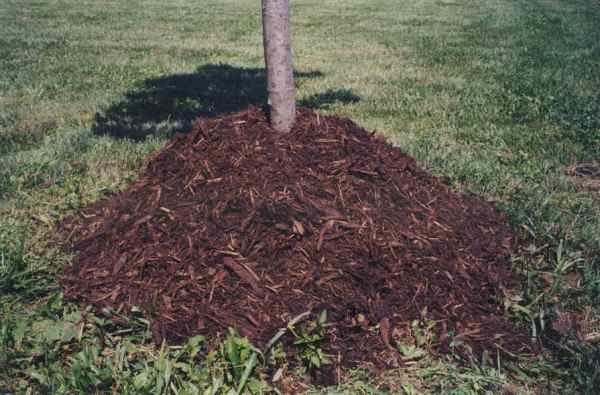

Mulching the soil will help protect cherry roots from frost
First of all, you need to protect the cherry roots from the effects of frozen soil in the depths. Autumn rains strongly compact the soil of the near-trunk circle, displacing air from it, which contributes to the rapid freezing of the soil. In this case, mulching the soil surface under the cherry crown will help.... For this, you can use any loose material: peat, leaves, sawdust.
A thoroughly cleaned stem must be protected from sunburn. To do this, whitewash... This can be done with synthetic latexes ВС-551 or by means of "Protection". You can also make the mixture yourself.
Structure:
- lime 1 kg;
- clay 1 kg;
- mullein 0.5 kg;
- copper sulfate 300 g
The components must be dissolved in water to the consistency of thick sour cream. The addition of a fungicide will provide additional protection against fungal spores. The smell of the mullein will scare away hares. For additional protection, the tree stem is wrapped in breathable material and garden mesh.
It will be useful for you to know:
- How to plant cherries in the fall
- How to plant a plum in the fall
- Planting and caring for felt cherries
- Winter-hardy pear varieties for growing in Siberia
Prophylaxis
To prevent excessive overgrowth formation, the state of the trunk circle is constantly monitored. All fallen berries and seeds are collected. Otherwise, after overwintering, they will sprout with the onset of spring. A spreading tree growing next to cherries relieves young shoots well. But in this case, the mother plant will also be deprived of light.
Read also Tomato superkluzha characteristics and description of the variety
The choice of cherry variety also influences the growth of the growth. Usually it is given by own-rooted seedlings. If cherries are grown in a seed yard, they do not form root shoots.
How to replant a tree?
In some cases, it becomes necessary to transplant an adult cherry to a new place in the garden. Given that the growing season of the tree begins early, this should be done in the fall. The best time for the event is the end of September or October.
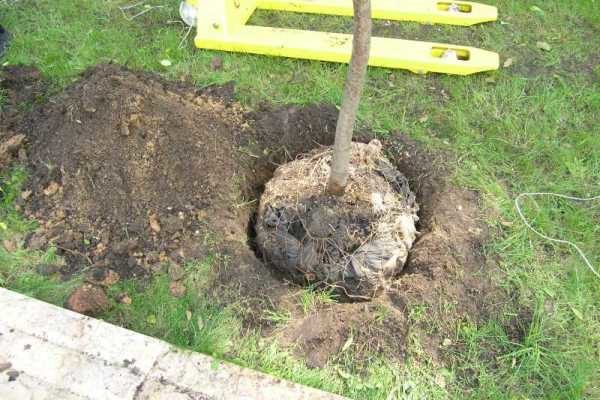

Autumn is a favorable time of the year for transplanting cherries
Cherry transplant stages:
- digging a trench at a distance of 35-45 cm from the trunk to a depth of 35 cm;
- copious spillage soil inside the circle;
- identification of main rootsholding a tree;
- cutting of roots along the outer border of the trench;
- stripping with a knife.
After that, strong poles are brought under the freed roots, the cherries are taken out and placed on a previously prepared material for carrying to the planting site.
Cherries are placed in a prepared hole, the diameter of which should be several centimeters larger than the root lump. Wherein it is important to spread the roots well so that they do not remain bent up... When filling the hole, the tree is slightly shaken to avoid the formation of voids.
When the hole is almost filled with soil, it should be well tamped. Do this in the direction from the edge of the pit towards the center. The remaining voids are filled with soil, and the tree is watered with 6-8 buckets of water.
The main mistake gardeners make is trying to transplant trees older than 4 years in a similar way.... When dug up in this way, large trees are deprived of the suction fibrous roots, which immediately leads to death.For large trees, preliminary preparation is required, and it begins in the previous season.
Preparation stages one year before planting:
- maximum crown thinning;
- the formation of a trench at a distance of 80 cm from the trunk with a depth of 60 cm;
- cutting off the roots that go beyond the perimeter of the circle;
- cleaning of sections and processing with garden pitch;
- the trench is filled with humus and watered abundantly.
The next year, the cherries are replanted in the same way as the younger trees.
You can only transplant healthy cherries without traces of damage on the trunk or burns. Trees up to 4 years old are most easily transplanted. Transplanting trees older than 10 years will most likely lead to their death.

